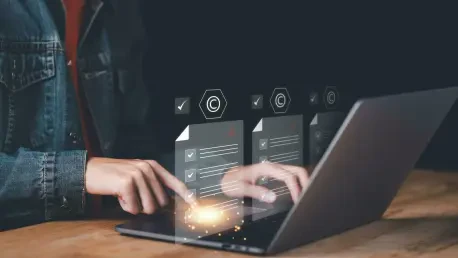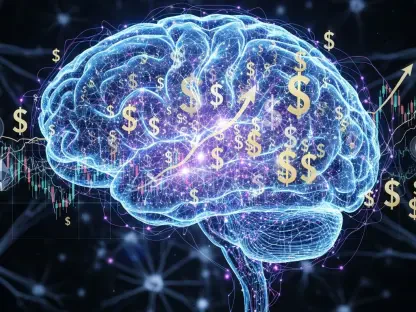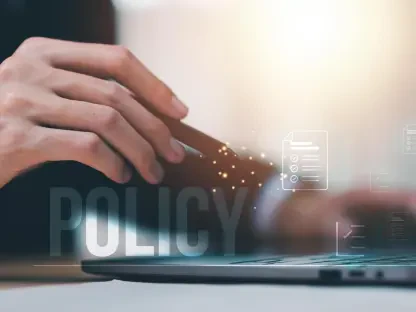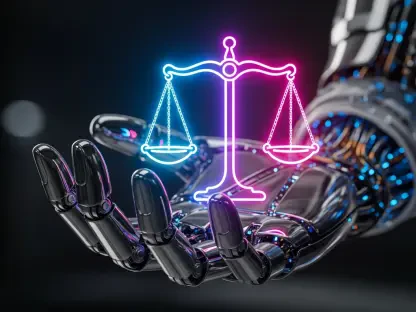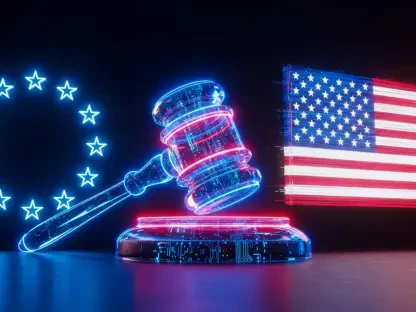In a landmark legal battle that has captured the attention of technology and entertainment sectors alike, Disney and Universal Studios have launched a lawsuit against Midjourney, an AI image-generation platform, signaling an unprecedented clash between Hollywood and artificial intelligence. The case highlights profound concerns regarding intellectual property rights amidst the rapid advancements of AI technology, particularly concerning how copyrighted materials and iconic characters are used. The situation underscores the need to scrutinize existing copyright laws and their adaptability to technologies that challenge traditional frameworks. The dispute is notable not only for its immediate legal consequences but also for its potential to reshape how AI and copyright law interact in the future.
Character Copyright Infringement and Derivative Works in AI
The Breach of Character Copyrights
The lawsuit targeting Midjourney’s alleged infringement centers on the crucial area of character copyrights, which has largely remained unexplored in the context of AI technologies. Historically, copyright disputes tend to focus on specific works rather than the broader scope of iconic character representations. Disney and Universal allege that Midjourney’s platform enables the creation of photorealistic images derived from their copyrighted characters such as Darth Vader and Spider-Man. These iconic figures, well-embedded in global popular culture, become the focus of this legal contention. Through generic prompts, the platform generates images that closely mimic original characters, a process the studios assert equates to creating derivative works in violation of established copyrights.
Midjourney’s technological capability presents a challenge to existing legal interpretations of derivative works. Unlike instances where direct copies of protected content are duplicated, the AI-generated images reflect transformations that still tightly adhere to the source material’s visual identity. The studios argue that this ability to mimic copyrighted characters blurs the lines between transformative use—often deemed permissible under fair use—and unauthorized reproduction. Given the advancements in AI technologies, the interpretation of character copyrights within this realm becomes increasingly complex. Courts find themselves navigating uncharted territory, balancing innovation with the protection of intellectual property in ways that were previously inconceivable.
Implications of Creating Derivative Works
Generating near-identical reproductions of copyrighted characters raises substantial consequences for both the entertainment and AI industries. For studios like Disney and Universal, safeguarding their intellectual properties against unauthorized reproduction is paramount to preserving the economic and cultural value of their creations. Characters such as those from Star Wars or Marvel franchises contribute significantly to licensing revenues and brand identity. Allowing ungoverned reproduction through AI platforms would potentially dilute these values, impacting brand integrity and financial performance. Meanwhile, AI companies must grapple with defining ethical boundaries when leveraging copyrighted materials, acknowledging the broader implications their technologies bear on creative industries.
The legal interpretation of what constitutes a derivative work in the context of AI models stands to set far-reaching precedents. Should courts determine that AI-generated images, even when transformed, still infringe on character copyrights, it may catalyze a re-evaluation of how such technologies are developed and constrained. This decision would likely influence agreements between AI firms and copyright holders, compelling a reconsideration of licensing arrangements and technology usage to ensure compliance with intellectual property laws. As AI platforms continue to grow, understanding the limits of transformative works becomes crucial for maintaining a balance between fostering innovation and protecting original creations.
The Intricacies of Unauthorized Use of Training Data
Allegations of Unauthorized Training Methods
Central to Disney and Universal’s complaint is the assertion that Midjourney developed its AI capabilities through the unauthorized use of copyrighted films and media. The studios allege that the company utilized “innumerable unauthorized copies” of their content to train AI algorithms, creating what they argue are outputs resembling scenes from iconic films like “Avengers: Infinity War.” This approach, according to the studios, represents a misappropriation of their creative works—using protected visuals not for transformative purposes but rather to replicate and distribute them without permission.
The crux of the allegation lies in the legality of using copyrighted content as training data for AI engines. While AI developers typically argue in favor of the fair use doctrine, positing that such use is transformative and thus permissible, this standpoint faces increasing scrutiny. The U.S. Copyright Office and various legal bodies are examining whether these practices comply with existing copyright protections. A key concern is whether AI outputs sufficiently differ from the original works to justify fair use interpretations. The legal dialogue here is pivotal in determining how training data should be obtained and whether present copyright guidelines adequately address such usage.
Legal Stakes and Their Strategic Consequences
The lawsuit not only aims to halt Midjourney’s alleged infringement but also seeks statutory damages that could total up to $150,000 per work infringed, as well as injunctions to prevent further unauthorized distribution. The demand for such financial penalties underscores the studios’ intention to deter the misuse of intellectual properties and fortify copyright enforcement within AI sectors. By pursuing stringent damages, Disney and Universal signal the imperative of respecting established copyright laws—a stance they hope will encourage refined legal frameworks governing AI developments.
This legal action represents a broader strategic objective to impose disciplined copyright adherence across the generative AI landscape. Should the courts favor the studios, AI platforms might face increased pressure to adopt stringent internal controls and licensing procedures when utilizing copyrighted materials. This scenario presents a dual outcome: instigating compliance within the AI industry while presenting new revenue pathways through possible licensing partnerships with content owners. Ultimately, this lawsuit could drive a broader recalibration of practices in developing AI models, necessitating a thoughtful alignment of technology capabilities with established intellectual property rights.
The Business Model and Market Positioning of Midjourney
Measuring the Profitability of Unlicensed Imagery
Midjourney occupies a unique position within the generative AI sector, largely due to its self-funded status and profitable business model projection. The company anticipates revenues nearing $300 million, a remarkable achievement driven by customer demand for AI-generated images. However, the pursuit of profit through unlicensed, branded imagery forms a core contention in Disney and Universal’s lawsuit, marking it as both an attractive business proposition and a source of legal challenges. This approach raises significant questions about intellectual property respect and ethical standards within the AI market.
For Midjourney, capitalizing on popular, unlicensed imagery creates tension between profitability and legal compliance. While this strategy spurs growth and attracts customers seeking innovative image solutions, it poses risks of litigation and reputational harm. As copyright disputes unfold, markets and consumers become increasingly aware of the ethical considerations and legal ramifications surrounding content generation processes. How the company navigates these challenges will shape its market outlook and broader industry standing, reflecting the balance it must strike between profit and the lawful exploitation of creative assets.
Navigating the Ethical and Legal Terrain
Midjourney’s case highlights the broader industry paradigm, where balancing innovation with respect for copyrighted material becomes crucial. Generative AI firms must navigate the dual responsibilities of driving technological advancement and aligning with ethical standards upheld by copyright owners. Doing so involves establishing clear boundaries on the replication and distribution of protected content and investing in processes that optimize the creation of transformative rather than derivative works. Such efforts not only mitigate legal risks but also foster trust among consumers and content creators, ensuring sustainable technology development.
This legal confrontation reinforces the growing need for clarity and standardization in AI content generation practices. As AI technologies evolve, disputes like Midjourney’s help illuminate the complexities of blending data innovation with intellectual property law, urging stakeholders to evolve with integrity. The call for frameworks that reconcile AI’s potential with creative ownership rights grows louder, demanding a concerted effort to craft guidelines and legal interpretations resilient to technological progress. How companies like Midjourney adapt their models will inform future AI developments, heralding a streamlined approach to fostering innovation while respecting proprietary rights.
Broad Trends and Industry-Wide Implications
Unraveling AI’s Relationship with Copyright Laws
The broader discourse ignited by this lawsuit centers around AI’s engagement with copyright laws, specifically examining the fair use doctrine’s application in this context. AI developers contend that leveraging copyrighted material for training models constitutes transformative use, a necessary step for technological innovation. However, this perspective is increasingly contested as courts evaluate whether such practices undermine exclusive rights and the distinctiveness of original works. The U.S. Copyright Office’s scrutiny exemplifies the complexity and variability of existing copyright standards when applied to AI-generated content, urging more precise codification.
A significant aspect of these deliberations involves the copyrightability of AI-generated works themselves. Traditionally, copyright laws necessitate human authorship for protection eligibility, a standard that challenges AI content, which often lacks direct human input. Nonetheless, debates continue about the threshold of human creativity needed to confer copyright status, with some arguments suggesting leniency when human intervention shapes AI outputs. This legal uncertainty highlights the pressing need for updated regulatory frameworks capable of reconciling AI capabilities with traditional copyright principles, ultimately guiding the evolution of digital content creation.
The Weight of Legal Precedents on Future Developments
Disney and Universal’s lawsuit against Midjourney transcends individual grievances, laying the groundwork for legal precedents that may influence AI industry operations. These developments are pivotal as artificial intelligence capabilities continue to expand, shaping the potential balance between innovation and rightful protection of creative endeavors. Should the lawsuit favor stricter copyright enforcement, AI firms will likely reassess how they utilize copyrighted material, forging pathways for partnership and licensing arrangements that align technological progress with legal requirements. This shift could establish stronger guidelines for responsible AI development, intertwining technological capability with ethical foresight.
Such legal precedents will impact sectors beyond film, extending to music, news, and visual arts, where similar concerns around AI content generation arise. As courts delineate the parameters of fair use and derivative works, AI developers may need to innovate within these boundaries, ensuring developments progress in harmony with intellectual property principles. This convergence requires a recalibrated approach to AI growth, wherein robust legal interpretations reinforce a spirit of collaboration between innovative technologies and creative artistry, heralding a future where advancements are ethically integrated.
The Future of AI and Copyright Alignment
Charting the Path Forward
This legal standoff encapsulates the pressing need for harmonized copyright principles that accommodate AI’s continuing evolution. Establishing legal clarity on using copyrighted material and the nature of derivative works will be crucial as AI models increasingly influence content creation. Moreover, balancing copyright protections with the transformative potential AI holds remains imperative, fostering environments conducive to technological progress within a regulated framework. Essential to this progression is fostering industry-wide dialogues, where stakeholders collaboratively shape policy and practices that reflect the advancing technological landscape.
The lawsuit emphasizes the importance of balancing innovation and copyright respect. Establishing equitable practices that prioritize transparency and accountability is necessary to safeguard intellectual property rights while permitting technological advancements to thrive. Companies must focus on developing innovative solutions that respect proprietary rights, blending creativity with legal compliance to pave the way for AI’s future development. Legal clarity on AI content creation will enable productive partnerships between industries, fostering environments that maximize technological potential within responsible frameworks that align innovation with legal and ethical standards.
Moving Toward a Balanced Ecosystem
The lawsuit against Midjourney targets the complex issue of character copyrights, an area largely unexplored in AI contexts. Traditionally, copyright conflicts focus on individual works rather than iconic character designs. Disney and Universal claim Midjourney’s platform allows for the creation of realistic images based on their copyrighted characters, like Darth Vader and Spider-Man. These beloved figures, deeply rooted in global culture, are at the heart of this legal battle. Using generic prompts, Midjourney generates images closely resembling the original characters, which studios argue are derivative works violating existing copyrights.
Midjourney’s technology challenges current legal views on what constitutes derivative works. While it doesn’t create simple duplicates, the AI-produced images closely reflect the original visual identities. Studios assert this blurs the line between transformative use—usually acceptable under fair use—and illicit reproduction. As AI technology advances, understanding character copyrights becomes increasingly complex. Courts face the difficult task of balancing innovation with intellectual property protection in unprecedented ways.
